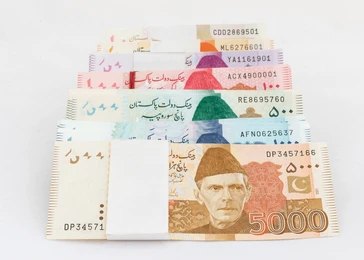Pakistan’s economy is breathing easier these days. Inflation has dropped to a jaw-dropping 0.3%—a figure that feels almost surreal after years of brutal price hikes. The State Bank, finally with breathing room, slashed interest rates by 1,100 basis points since mid-2024. For families and businesses, this isn’t just a headline—it’s hope. Cheaper loans offer relief. But beneath this cautious optimism lies a web of deep risks.
Progress and Peril
Foreign currency reserves have climbed to $11.66 billion, up from $9.4 billion in August 2024. A $1 billion IMF disbursement gave the system a jolt of life, followed by another $1.4 billion pledged for climate resilience. Economic stabilization and reserve growth are finally tangible. Gold reserves—valued at $6.86 billion—add shine to an otherwise fragile safety net.
But how we got here matters.
The IMF’s support isn’t charity—it’s a reminder of delayed reforms. Export sectors, backed by Rs. 336 billion in credit, are starting to show signs of strength. Remittances jumped 33%. Even whispers of potential gold deposits in the Indus River hint at untapped promise. And yet, these wins are fragile—precariously so.
The Debt Dilemma
Government borrowing from the State Bank has ballooned to Rs. 6.48 trillion—nearly 25% of the bank’s assets. This isn’t just a number. It’s a red flag.
When states lean too heavily on central banks, their independence crumbles. Inflation may be asleep now, but history reminds us—it never sleeps for long.
Critics argue, “But we need growth!” And that’s fair. Roads need building. Schools need books. But borrowing without a plan is like drinking seawater—appears helpful, but ultimately destructive. A heavy portion of this debt comes from Pakistan Investment Bonds (PIBs), now accounting for Rs. 20.37 billion. Over-reliance on short-term instruments makes us vulnerable.
If we’re serious about economic stabilization and reserve growth, we must cut waste and reform taxes.
Golden Uncertainties
Gold reserves, though impressive on paper, carry complexity. The SBP pegs them at $6.86 billion. External sources? $7.6 billion. The gap reflects valuation volatility, not malice. But it reminds us: gold is not a plan. It’s a cushion, not a cure. Economic stabilization and reserve growth cannot rest on gold alone.
Cash in the Shadows
Rs. 38.47 billion in physical banknotes are in circulation. That’s a lot of cash—and not all of it flows through formal channels.
A booming informal economy isn’t just a nuisance—it’s a leak. It powers day-to-day life, yes, but it also weakens financial institutions and blunts policy impact. Financial inclusion isn’t a slogan; it’s the bridge from survival to shared prosperity.
A Roadmap for Resilience
So, where do we go from here?
Economic stabilization and reserve growth offer a rare reset. But we must be bold and smart. Here’s what we need:
- Slash non-essential borrowing—immediately.
- Invest in exports and renewables—our true engines of growth.
- Scale Islamic finance—Rs. 153 billion in export credit shows the potential of ethical, inclusive lending.
For most people, this isn’t about numbers. It’s about a Faisalabad factory worker’s paycheck. A Quetta student’s books. A Karachi family’s electricity bill. Economic stabilization and reserve growth must deliver real outcomes.
The Stakes of Stability
Pakistan stands at a rare crossroads. IMF dollars and gold don’t guarantee immunity. Economic stabilization and reserve growth are milestones, not destinations. If we don’t act wisely now, this moment may slip away—again.
Build an economy that thrives, not just one that survives.


Leave a Reply